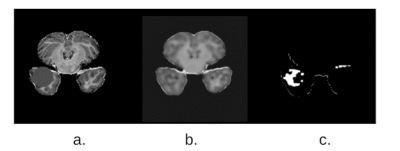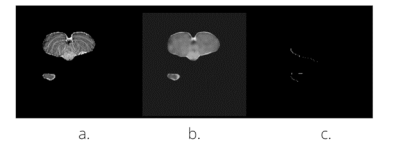Soumick Chatterjee1,2,3, Alessandro Sciarra1,4, Max Dünnwald3,4, Shubham Kumar Agrawal3, Pavan Tummala3, Disha Setlur3, Aman Kalra3, Aishwarya Jauhari3, Steffen Oeltze-Jafra4,5,6, Oliver Speck1,5,6,7, and Andreas Nürnberger2,3,6
1Department of Biomedical Magnetic Resonance, Otto von Guericke University, Magdeburg, Germany, 2Data and Knowledge Engineering Group, Otto von Guericke University, Magdeburg, Germany, 3Faculty of Computer Science, Otto von Guericke University, Magdeburg, Germany, 4MedDigit, Department of Neurology, Medical Faculty, University Hopspital, Magdeburg, Germany, 5German Centre for Neurodegenerative Diseases, Magdeburg, Germany, 6Center for Behavioral Brain Sciences, Magdeburg, Germany, 7Leibniz Institute for Neurobiology, Magdeburg, Germany
1Department of Biomedical Magnetic Resonance, Otto von Guericke University, Magdeburg, Germany, 2Data and Knowledge Engineering Group, Otto von Guericke University, Magdeburg, Germany, 3Faculty of Computer Science, Otto von Guericke University, Magdeburg, Germany, 4MedDigit, Department of Neurology, Medical Faculty, University Hopspital, Magdeburg, Germany, 5German Centre for Neurodegenerative Diseases, Magdeburg, Germany, 6Center for Behavioral Brain Sciences, Magdeburg, Germany, 7Leibniz Institute for Neurobiology, Magdeburg, Germany
The preliminary results
indicate that the approach was able to segment candidate anomalous regions while
it tends to generate false positives. However, it might be a beneficial tool
which can be used to support interactive decision making.

Fig 3. (a) Anomalous MOOD validation data (b) Model does not reconstruct the anomaly in
the output (c) Mask representing the difference between the input
image and the reconstructed image, indicating
the presence of an anomaly or out of distribution
sample in the input image. By morphological
closing along with binary thresholding,
the edges of the anomaly are detected and hence localized

Fig 2. (a) Non-anomalous MOOD data which is
the input to our model (b) Reconstructed image
obtained as the output of our model (c) Mask
representing the difference between the input
image and the reconstructed image, with 0
value indicating no anomaly or out of distribution
sample in the input image.
